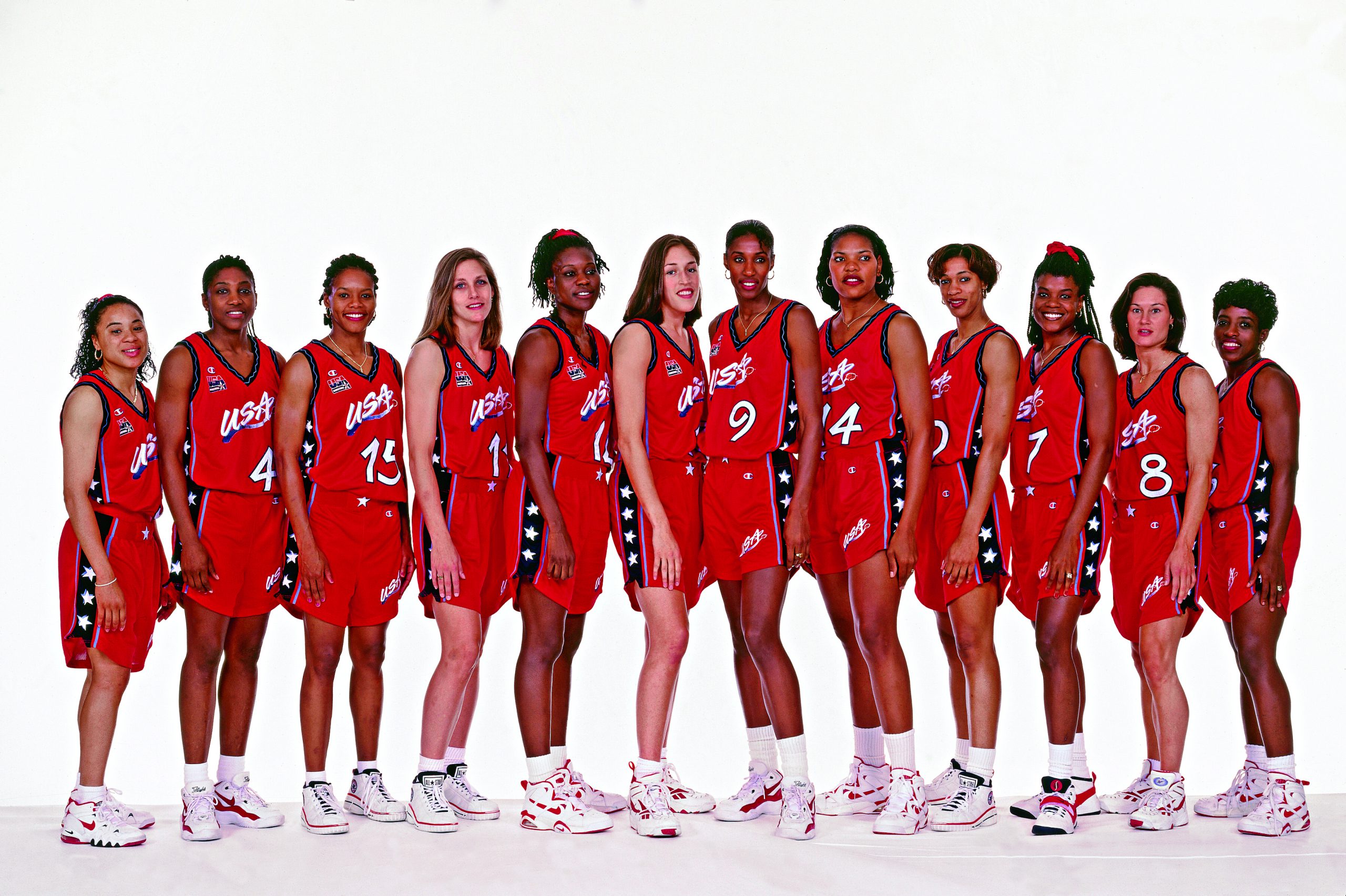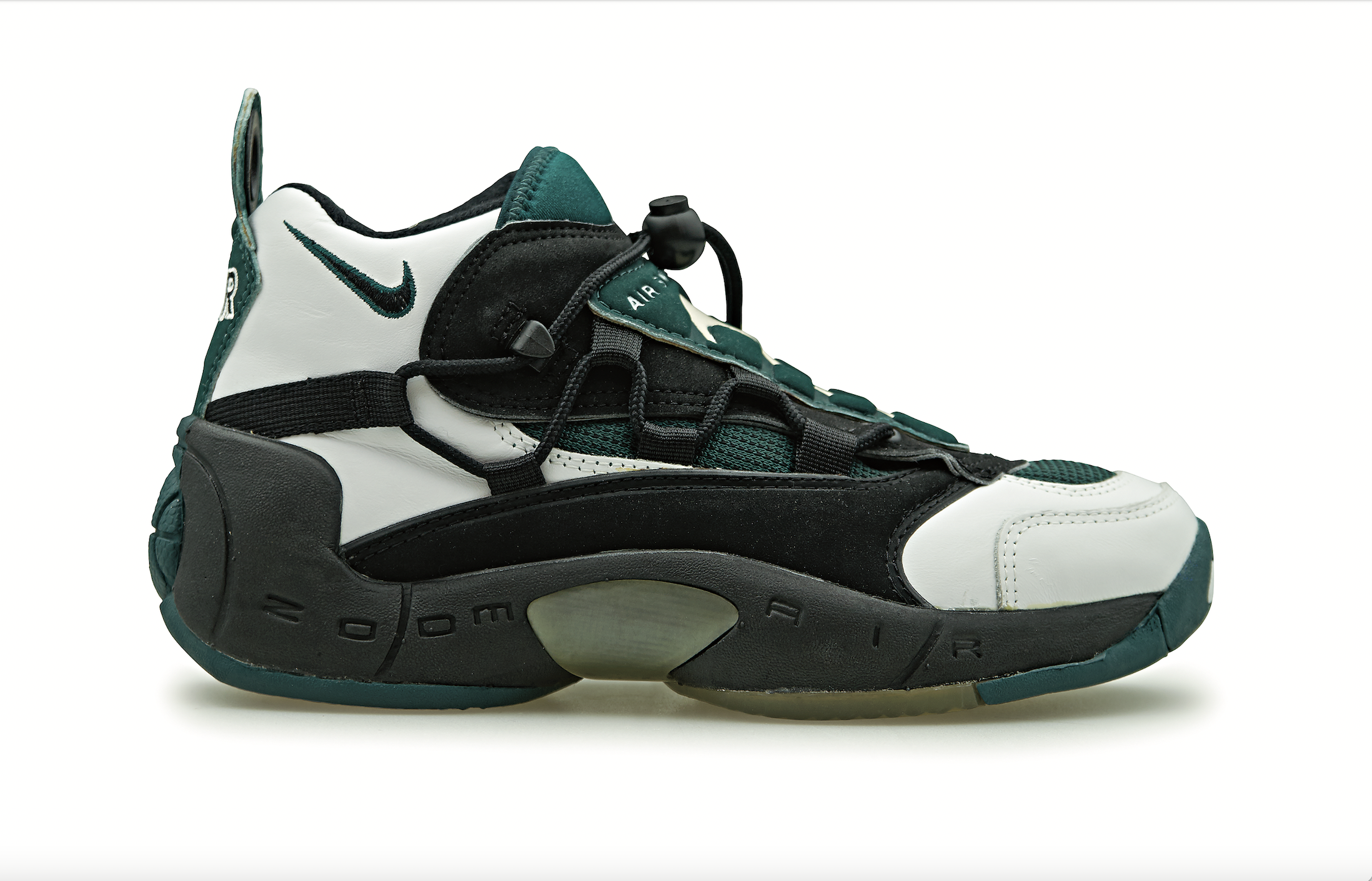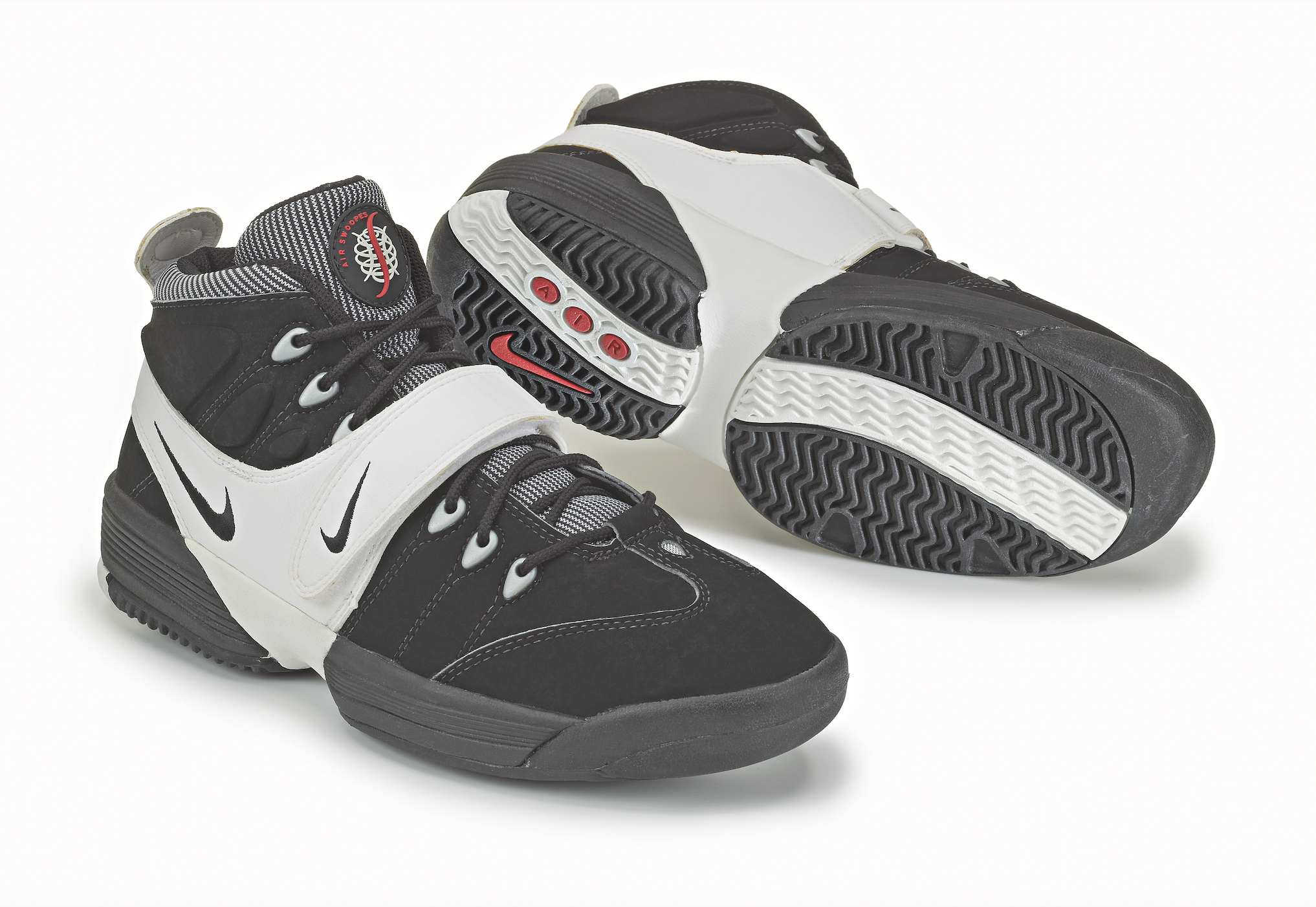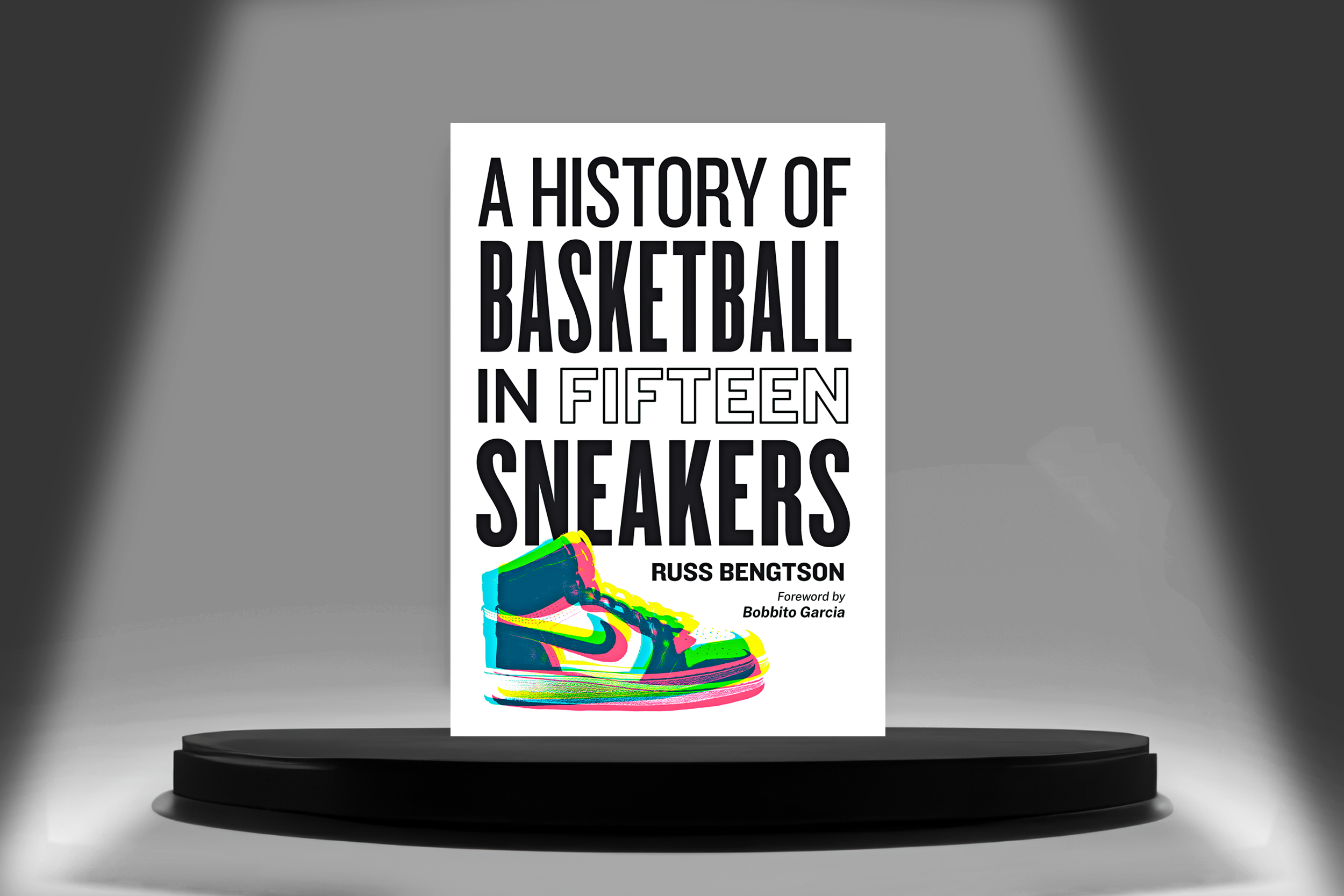Former SLAM Ed. Russ Bengtson knows his stuff when it comes to basketball footwear. In this excerpt from his upcoming book, A History of Basketball in Fifteen Sneakers, he tells the story of the first women’s signature sneaker, the Nike Air Swoopes.
Order your copy of A History of Basketball in Fifteen Sneaker here.
The summer Nike signed Swoopes, MJ himself invited “the female Jordan” to work at his camp and challenged her to a game of one-on-one. Swoopes airballed her first three shots but went up 4–3, then down 7–4. He won the game; she got his UNC shirt. She felt good enough afterward to talk trash to his face on camera: “He was tired. Old, out of shape . . .” Jordan interjected with a smile, “I didn’t see any challenge. I just wanted to cut it short before someone got hurt.”
More was coming. Nike designer Marni Gerber went to Lubbock to learn what made Swoopes tick and find out what she liked in a sneaker. The result was 1995’s Air Swoopes, the first-ever signature women’s basketball shoe—and one crafted to fit Swoopes’s narrow size-10 foot perfectly. Nike’s list of signature athletes in basketball that year was a short one: Michael Jordan, Charles Barkley, Penny Hardaway, Chris Webber. Swoopes was just the fifth.
The mid-cut Air Swoopes featured a mid-foot strap, a pull tab on the heel that was long-fingernail compatible, and Swoopes’s own logo, a stylized “S” on the tongue. It even got one of Nike’s minimalistic print ads featuring a shoe and a 1-800 phone number that people could call to hear Sheryl talk about her own sneaker. The Air Swoopes was a serious hoop shoe designed by women, marketed by women, and marketed to women, with sneakers only in women’s sizing. It was something completely different.
“That [shoe] made everybody stand up and take notice,” said former AND1 and Nike exec Jeffrey Smith. “You mean the girl’s version doesn’t need to be just pink and light blue?” Quite to the contrary: The $85 release version was basic black with a white strap, and Swoopes got her own red, white, and blue makeup to debut as a member of the US National Team. And it wasn’t just any US National Team, but one with vengeance on its mind.

After third-place finishes in the ’92 Olympics and the ’94 World Championships, nothing less than gold would be acceptable at the ’96 Games in Atlanta. Stanford’s Tara VanDerveer stayed on as coach, and the week-long Olympic Trials began in Colorado Springs with 24 players in May 1995. By the time practices started, that 24 had been whittled down to 11, including Swoopes, former Virginia point guard Dawn Staley, and former USC center Lisa Leslie. UConn center Rebecca Lobo was the youngest player at 22, and the two oldest—31-year-old Teresa Edwards and 30-year-old Katrina McClain—were both from nearby in Atlanta. Swoopes was able to lace up her own shoe for the first practice—“That’s cute,” VanDerveer remarked about the signature sneakers.
Starting on Halloween, the squad embarked on a grueling, globe-spanning 52-game exhibition schedule. The primary goal was for the players to coalesce into a true team. But along the way, as they racked up win after win (after win after win after win), they accomplished something more. For starters, they showed just how much better they were than even the best college teams. Louisiana Tech lost 85–74, the closest that any NCAA squad would get. The next closest was Tennessee, who lost by 34. The Olympians beat Stanford 100–63, Kansas 101–47, George Washington 110–37, and Ohio State 118–49, finishing that initial leg of their tour with a 107–24 drubbing of Colorado.
From there they went to Russia, Ukraine, China, and Australia, with some more domestic sellouts in between. Fans kept coming and Team USA kept winning. There were a few close calls: a three-point win over Cuba in Ningbo, China, then a one-point squeaker against Russia in Chicago in their second-to-last game. But when they closed out the final game, an 86–46 victory over Italy before a crowd of 10,643 in Indianapolis, the Americans were 52-0. A little over a week out from the Olympics, they were more than ready.

After all that dominance, the Atlanta Games were almost an anticlimax— except for the crowds. They had drawn well on their world tour, but this was something else entirely. Team USA averaged 25,000 fans per game, with nearly 33,000 packing the Georgia Dome to watch them dismantle Brazil in the gold medal matchup. Swoopes finished as the team’s third-leading scorer, averaging 13.0 points per game, shooting 55 percent from the floor, and ranking second in assists.
She had already transitioned into her second shoe, the Swoopes II, by the start of the Games in 1996. The new sneaker featured off-to-the-sides lacing, a big Swoosh up front and a tiny one at the ankle, and a prominent shank plate in the middle of a thick midsole that was far ahead of its time. Maybe, like the first Air Jordan, Nike should have given the first Air Swoopes more time to breathe and let the legend build before releasing a next sneaker. Then again, Sheryl never even lost a game in her first shoe. Even Mike couldn’t say that.

Talk had begun early in the world tour of forming a new women’s professional league called the American Basketball League (ABL), whose founders hoped to sign up as many Olympians as they could. Many tentatively agreed to join; with the new possibility of earning a real salary to play at home in the United States rather than finding a scarce spot overseas, the decision was a no-brainer. But before the pre-Olympics tour concluded, the NBA had announced a second professional option, one with even more solid backing. The best women players would have a choice of American pro leagues, something their predecessors had never enjoyed.
Excerpted from “A History of Basketball in Fifteen Sneakers.” (Workman) by Russ Bengtson. Copyright © 2023





















Discussion about this post